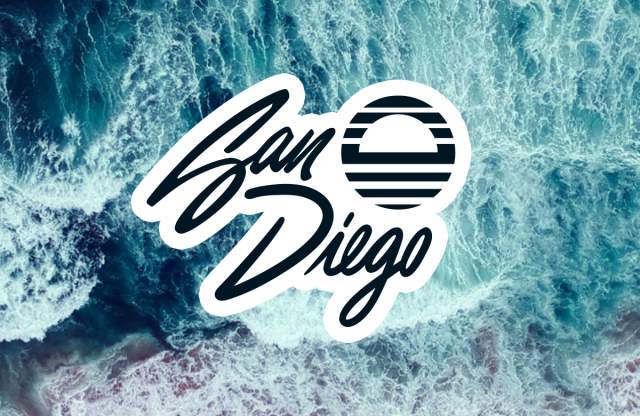San Diego is home to incredible beaches, beautiful weather, and a lively community, but like any city, it also faces its challenges—especially when it comes to supporting teens at risk. Whether it’s substance abuse, mental health issues, or behavioral problems, teens in San Diego have options when it comes to getting the help they need. But with so many different types of treatment available, what’s the best fit? Let’s dig into what these options look like and how they can turn things around for struggling teens.
Residential Treatment Centers: A Fresh Start
Residential treatment centers offer a structured environment for teens who need 24/7 support. These programs often cater to those who may struggle with more severe issues, like chronic substance abuse or severe depression, where other treatment options haven’t been successful. By living at the facility, teens are removed from any negative influences or stressful situations they might face at home or school.
These centers provide a mix of individual and group therapy, helping teens build emotional resilience, develop coping mechanisms, and work through personal challenges in a safe space. The structured nature ensures that teens aren’t left to figure things out alone; they have support every step of the way. While these programs can be intense, they can be life-changing for those needing that level of guidance and security.
Intensive Outpatient Programs (IOP): Freedom with Support
For those who don’t need 24-hour supervision but still require significant help, Intensive Outpatient Programs (IOPs) are the go-to. A San Diego teen IOP can be a game-changer for those who need a balance between structured support and the ability to stay at home or attend school.
These programs often meet several times a week, providing therapy sessions that focus on everything from managing anxiety and depression to avoiding risky behaviors. What makes this approach so effective is its flexibility. Teens can stay connected to their everyday lives—school, family, friends—while still getting the help they need. This model helps them apply what they learn in therapy to real-world situations, giving them a sense of control and empowerment as they make healthier choices.
The San Diego teen IOP model shines because it’s tailored to fit each individual’s needs. With personalized therapy plans and group sessions with peers facing similar struggles, teens don’t feel isolated or misunderstood. It’s about building a support system that extends beyond the therapy room, fostering growth and lasting change.
Day Programs: A Steady Routine for Lasting Change

Day programs are another effective option for at-risk teens in San Diego. These programs offer a full day of therapeutic activities without requiring the teen to stay overnight. It’s the right choice for those who need more structure than an IOP provides but aren’t quite at the level where they need a residential facility.
Teens enrolled in day programs benefit from a consistent routine, which can be especially helpful for those struggling with issues like ADHD, anxiety, or depression. The programs often combine academic support with therapy, allowing teens to keep up with schoolwork while also addressing their emotional and behavioral challenges.
For parents, knowing their teen is getting professional help during the day while coming home at night offers a balance of involvement and peace of mind. It’s in these day programs where how parents benefit from treatment comes into play. Parents are often encouraged to participate in family therapy sessions, learning skills that help them support their teen’s progress at home. It becomes a team effort—one that empowers families to work together and build a more supportive environment.
Wilderness Therapy: Nature as a Healer
Sometimes, the traditional four walls of a clinic or therapy room don’t feel right for every teen. This is where wilderness therapy comes in. By taking treatment outdoors, teens engage with nature, building skills that go beyond the typical therapy experience. Activities like hiking, camping, and team-building exercises help teens gain confidence, develop leadership skills, and learn to work with others.
Wilderness therapy programs in San Diego focus on the healing power of nature, using it as a tool for transformation. Being away from the distractions of daily life allows teens to unplug, reflect, and build self-awareness. It’s a way for them to reconnect with themselves and discover a sense of independence and self-worth.
While the adventure-based approach can be intense, it’s designed to push teens out of their comfort zones in a controlled, safe manner. It encourages them to develop resilience, communication skills, and trust in both themselves and the group. By the end of the program, they often leave with a new perspective and tools to navigate life’s challenges.
Therapy and Counseling: Traditional Routes That Work
For teens who may not require the intensive structure of a residential or day program, traditional therapy and counseling remain powerful tools. Whether it’s individual therapy, family therapy, or group sessions, the focus is on building trust and communication skills while addressing the core issues a teen might be facing.
Cognitive Behavioral Therapy (CBT) is a common approach used for at-risk teens. This method helps them recognize and change negative thought patterns that influence their behavior. It’s practical, effective, and can be tailored to various issues, whether it’s anxiety, depression, or substance abuse. Therapists in San Diego often blend CBT with other methods, ensuring that teens get a treatment plan suited specifically to their needs.
Family counseling is also a key piece of the puzzle. By involving parents and siblings, the whole family can work through dynamics that may contribute to the teen’s struggles. These sessions foster better communication and understanding, allowing for healthier interactions at home. It’s about creating a supportive environment that encourages teens to grow and succeed.
Final Thoughts
When it comes to supporting at-risk teens in San Diego, the options are diverse and adaptable. From the structure of residential centers to the freedom of IOPs and the adventure of wilderness therapy, each approach has its benefits. What’s most important is finding the right fit for the individual and ensuring they feel supported, understood, and empowered to make positive changes. Every teen’s journey is different, and with the right help, they can get back on track and thrive in their environment.

